'My grandma's legacy': How to make Navajo steamed corn stew
Denee Bex suspects her first time trying the classic Navajo dish steamed corn stew was at a flea market, where vendors can usually be found ladling steamed corn stew into Styrofoam bowls alongside farmers selling piles of freshly harvested ears from the backs of their pickup trucks. But her most vivid memory of the dish comes from a sweltering day in Phoenix when she was 19 years old.
She'd started dating her now husband Brian, who she met at Arizona State University while they were studying for their bachelor’s degrees. He'd invited her to his parents’ home for dinner. Bex recalled the heat of the day, how sweaty she must have appeared to her future mother-in-law. With one spoonful of homemade steamed corn stew, her body relaxed.
They ate the stew with dah diníilghaazh, flat puffy rounds of fry bread. She savored the sweet earthiness of the neeshjizhii kernels swimming in a salted broth with chunks of mutton.
The stew takes hours to make and Navajo white corn itself is a delicacy — bags of dried kernels of steamed corn can go for $20 a pound in some places, Bex explained. “It means something when someone cooks that for you.”
Eat here soon: A Diné chef is opening a fry bread restaurant in downtown Mesa
How neeshjizhii became a passion project
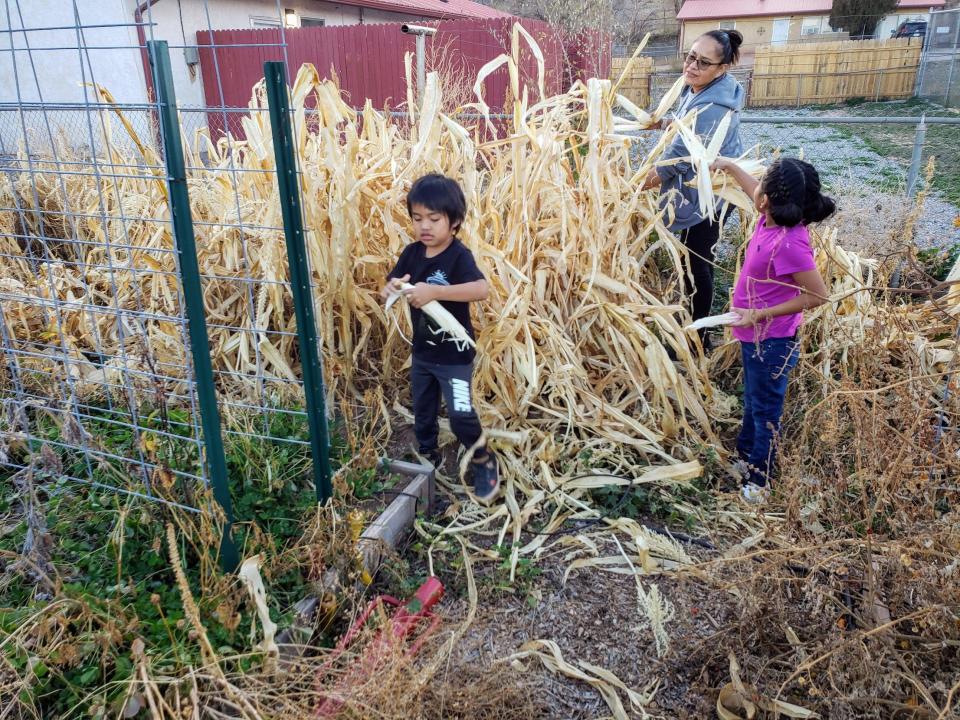
The couple lives in Fort Defiance, Arizona where they tend their backyard garden. Bex works as a registered dietician at Tséhootsooí Medical Center and as a personal nutritionist with her company Tumbleweed Nutrition. She also started a Facebook group called Navajo Land Gardeners & Farmers for growers to connect with each other.
Preparing neeshjizhii, or dried steamed corn, became a home project for the couple about five years ago after Brian’s aunt gifted them with Navajo white corn seeds from the family farm in Tohatchi, New Mexico.
“It’s my husband’s comfort food,” Bex said, explaining her motivation for learning to make the traditional dish. “He always associated it with his family and his maternal grandmother. I just wanted to support him in that, but over time, I started to appreciate more the process of Navajo cooking. I always did, but this was me and my husband’s own project to figure it out on our own.”
What is Navajo white corn?
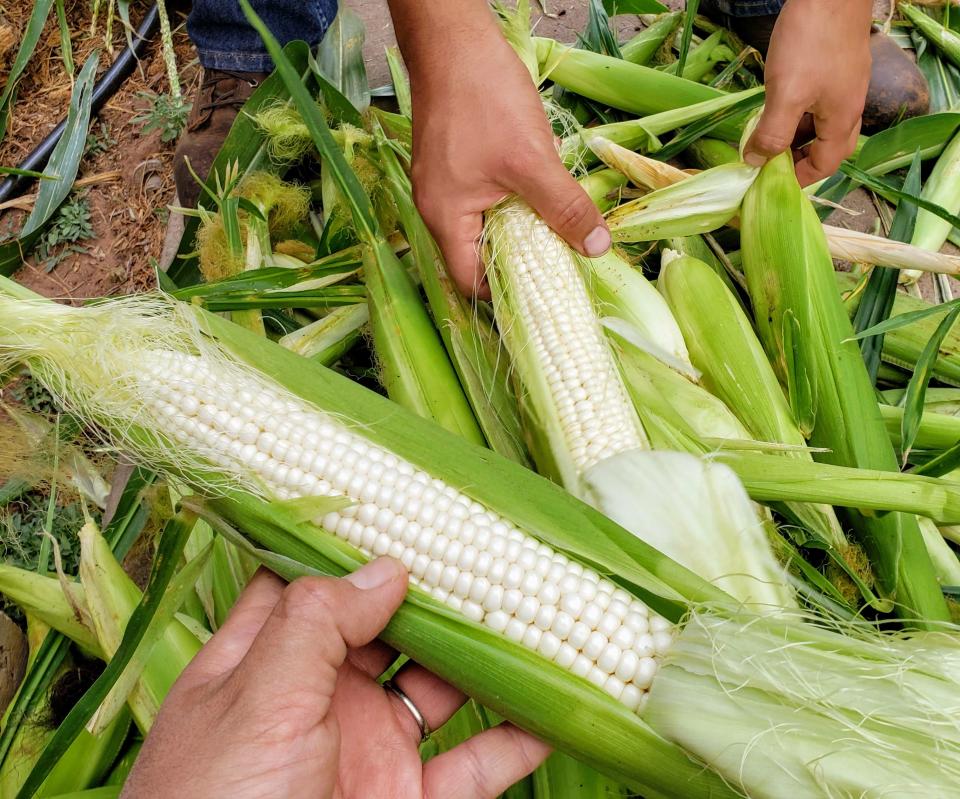
Navajo white corn tastes different from the common, yellow sweet corn found in grocery stores, Bex said. The Diné have bred their corn varieties to be heartier and more drought tolerant, to pack in more calories and protein. Younger corn can taste sweeter than older corn, but yellow sweet corn tastes like candy compared to Navajo white corn, she explained.
Corn isn’t just a staple crop, it’s embedded in Navajo legend, Bex said. In the Diné origin story, man was created from the ear of white corn and woman from yellow corn. During a traditional Navajo wedding, the couple will eat corn mush made from both white and yellow corn to ensure a fertile marriage.
“Every year we expand our little corn field plot and this year it just kind of exploded,” Bex said. “We had so much corn. We watched other families who were preparing this corn and asked them how to do this, then adapted to where we’re at.”
Spotlight: From 'dirt poor' to Arizona fine dining, now this chef is sharing his Navajo food culture
How to process Navajo white corn for neeshjizhii
Navajo white corn is typically harvested in late August through September, though Bex's harvest this year lasted through early November.
Before white corn can be used to make stew, it must first be par-cooked and dried to make neeshjizhii, a process that traditionally begins by steaming the corn underground. To steam the corn underground, Bex and her husband first build a fire, which heats up the dirt a few feet down. It’s like preheating the oven, she said.
After that, they carefully move the fire aside and dig out the hot dirt, about a couple feet deep for 50 to 100 ears of corn from her garden, she estimated. The depth and size of the pit depends on how much corn someone has. She’s seen friends with acres of corn fields who dig a pit that’s deep enough for people to jump inside. Those pits can fit hundreds, if not thousands, of ears of corn, she said.
Stacks of the corn go into the pit and are sprinkled with water to produce steam. They layer empty corn husks on top, bury the corn under the hot dirt and build another fire over it. They keep the fire going for about eight to ten hours, so it’s an all-day affair, she said.
Once the fire dies down, they remove the ashes and carefully pull out the hot corn. At this point, the freshly steamed corn is ready to eat right out of the ground. Or it can be dried.
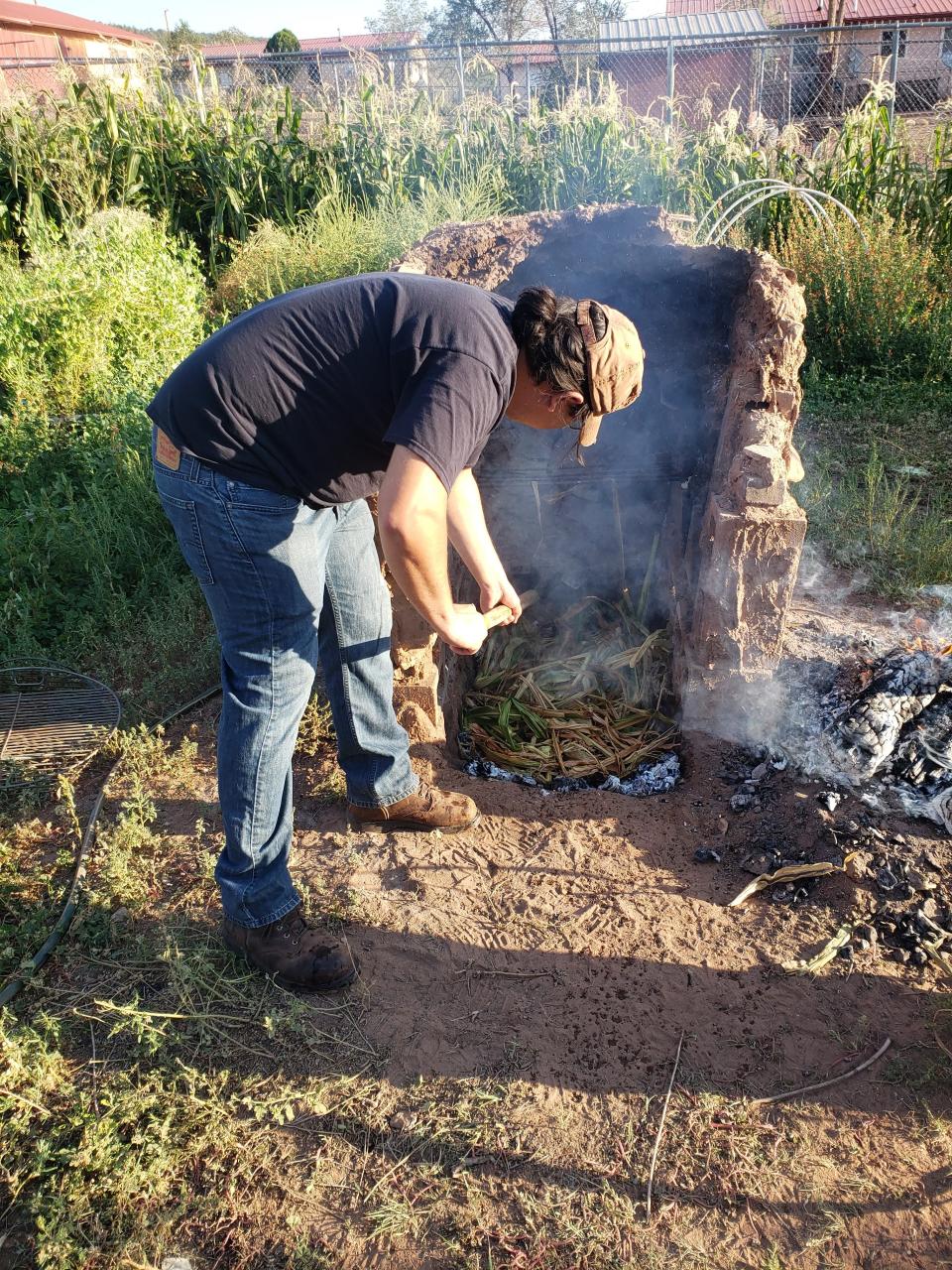
For the corn she plans to dry, she shucks the husks after the ears cool. If the corn has been cooked long enough, the kernels will have an amber color similar to the top of baked bread, she described.
Some people lay their corn outside to dry, but Bex said she and her husband lay their corn on shelves in a guest bedroom, jokingly dubbed “the corn room,” to keep their corn away from the squirrels and dogs.
With a window cracked open and a fan blowing, it takes about two weeks for the corn to dry. At peak harvest time, corn takes over their house, Bex said.
Once completely dry, the kernels can be removed from the cob by either rubbing two cobs together or using a spoon to push the kernels off. It’s important to store the dried corn in airtight containers because if water gets in, it can spoil the batch, she said.
Steamed dried white corn will last for six months to a year when kept in an airtight container.
Steamed corn stew is a special occasion dish
Navajo white corn is precious and the stew takes several hours to cook, so people in Bex's community typically only make steamed corn stew for special occasions, such as ceremonies and birthday parties, she said.
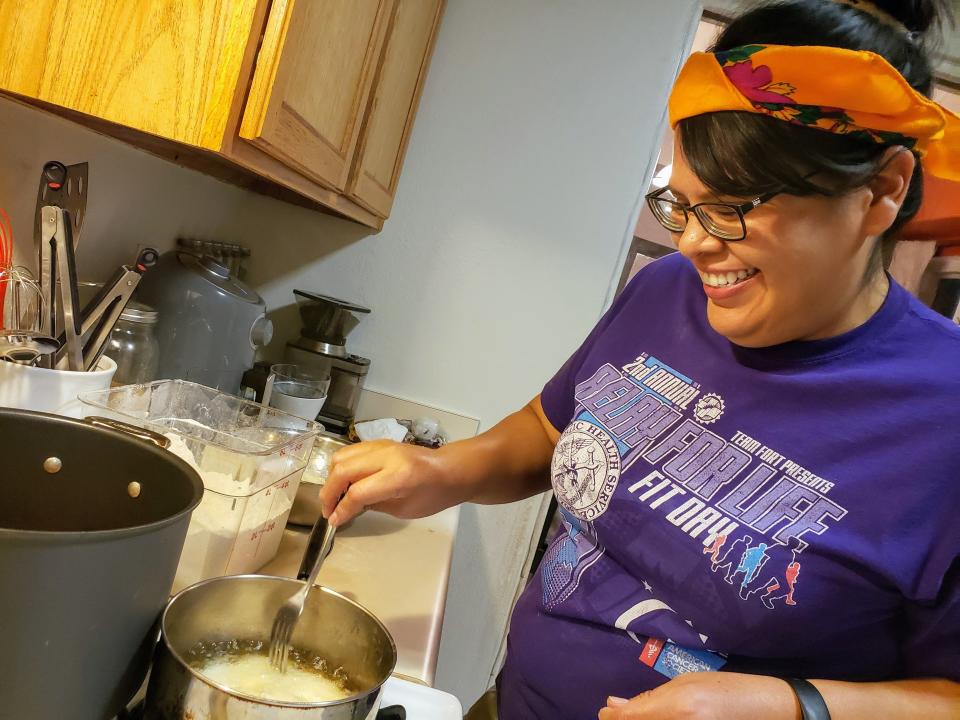
“You save that for when you’re really feeling it to eat in a celebratory way,” Bex said. “It’s like fancy wine. You don’t just break that out for any ol’ night.”
Steamed corn stew requires few ingredients, just dried steamed corn kernels, water, salt and mutton or lamb, served with fry bread or tortillas on the side. Bex said she likes to season hers with chile and garlic powder and add squash, which is not the way her elders are used to seeing steamed corn stew.
Bex said her earliest memories of corn come from watching her own grandmother grow corn and vegetables in Chinle, Arizona. Her grandmother died 11 years ago and Bex thinks of her now that she and her husband have their own garden and small corn crop.
“I’m mindful this is, and I don’t mean to sound mushy, a part of my grandma’s legacy after she left us 11 years ago. I feel like growing my own food is part of that… She wasn’t meaning to teach me, but I think she taught me to appreciate food and appreciate the land.”
Eat here now: 7 Indigenous-owned restaurants in metro Phoenix
Where to buy Navajo steamed corn in Phoenix
Neeshjizhii, or dried Navajo steamed corn, can be purchased in Phoenix from Chambers Meat Company, an online Navajo butcher shop that also sells other specialties such as mutton, lamb, sheep, roasted blue and yellow corn, juniper ash and Navajo tea, as well as already-prepared steamed corn stew.
People can also order neeshjizhii online from two companies in New Mexico, Ben Farms, and Bee Sézį́.
Chambers Met Company: 405 W. Southern Ave., #5, Tempe. 480-282-3070, chambersmeatcompany.com.
Ben Farms: 505-860-2962, benfarms.com.
Bee Sézį́: 505-486-5690, beesezi.com.
Recipe: How to make Slow Cooker Navajo Steamed Corn Stew
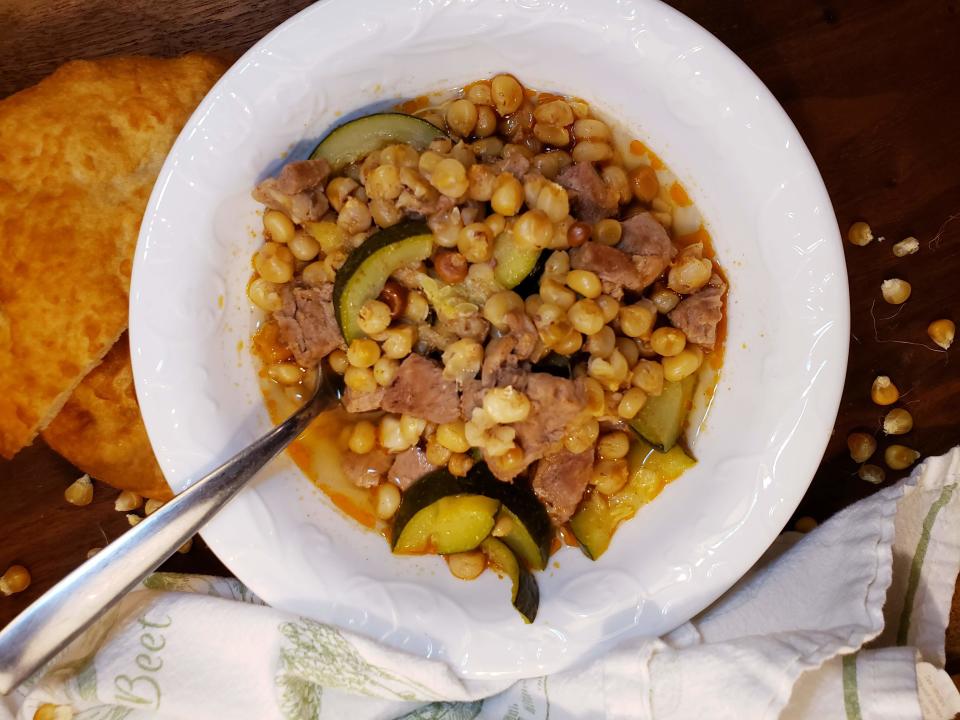
As told by Denee Bex.
Neeshjizhii is a Navajo traditional staple food and delicacy made from white Navajo heirloom corn. This modern version of the stew uses a slow cooker and incorporates the common Navajo staples, lamb and zucchini.
Serves: 8-10 people
Ingredients
2 lbs mutton or lamb, cut into ½ to 1 inch cubes
2 ½ cups Neeshjizhii (dried Navajo steamed corn)
1 tablespoon ancho chile powder
1 teaspoon garlic powder
2 zucchini, sliced into half moons (optional)
Salt, to taste
Instructions
Brown mutton cubes over medium high heat in a large skillet. Once browned, transfer to a 7-quart slow cooker.
Add neeshjizhii, ancho chile powder, garlic powder and 7 cups of water to the slow cooker. Stir gently to incorporate. Cover slow cooker and turn on high. Cook for 4 to 6 hours.
During the last 30 minutes, add zucchini and salt.
Taste and adjust seasoning. Serve with frybread.
Reach the reporter at Priscilla.Totiya@azcentral.com. Follow @priscillatotiya on Twitter and Instagram.
Subscribe to azcentral.com today to support local journalism.
This article originally appeared on Arizona Republic: Navajo steamed corn: Stew recipe and where to buy it in Phoenix

